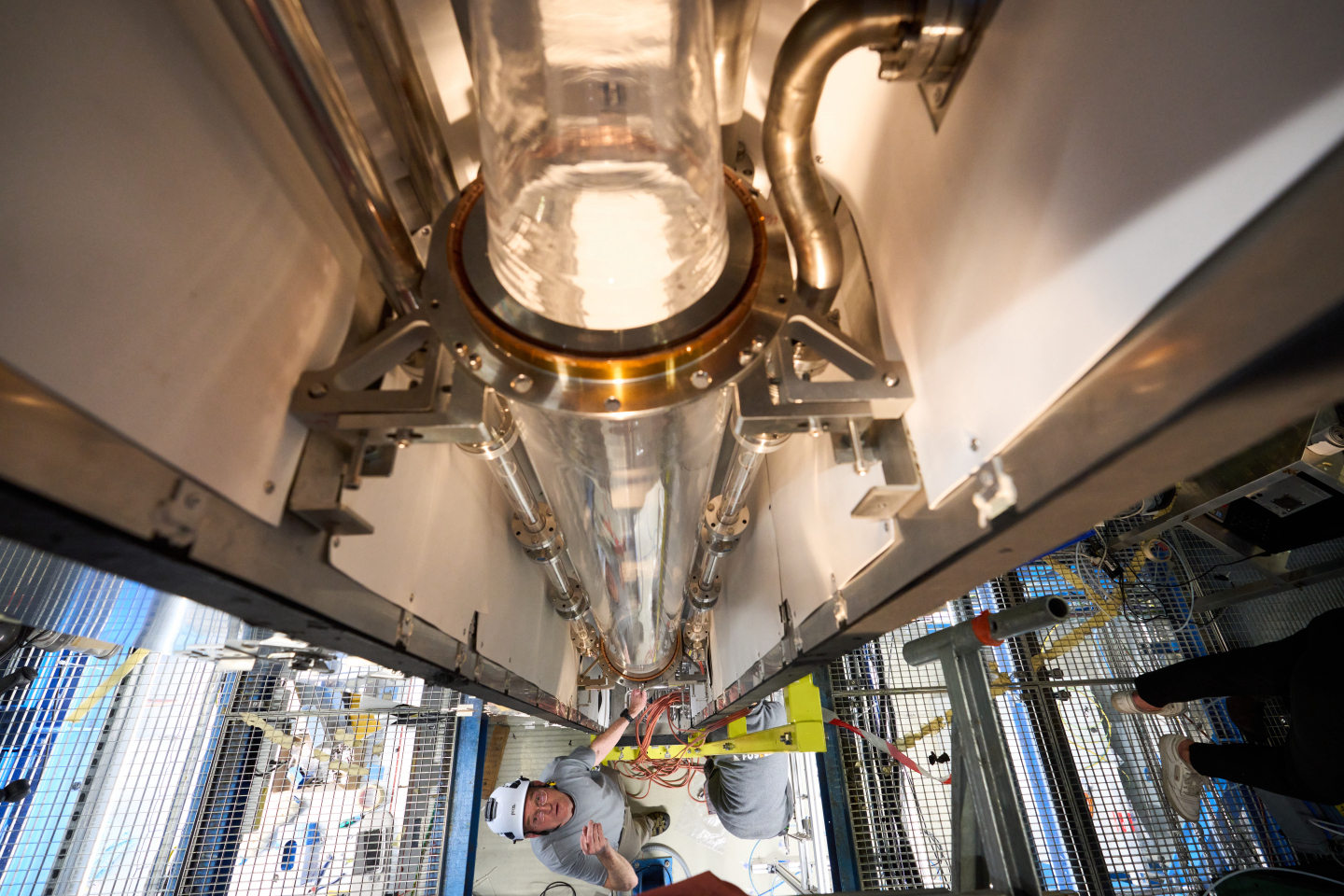Located at the heart of CERN’s East Area, the CLOUD experiment studies interactions between cosmic rays (simulated by a pion beam from the PS) and aerosol particles present in Earth’s troposphere (the lowest layer of the atmosphere) in order to understand better the mechanisms at play in the formation of aerosols and the clouds they seed. Since the industrial revolution, human activities have significantly increased the quantity of aerosol particles in the atmosphere, but they remain persistently uncertain in global climate models, giving rise to a wide range of projections of climate warming.
The CLOUD experiment simulates selected regions of Earth’s atmosphere. The 26 cubic meter stainless steel chamber is filled with humidified ultra-pure synthetic air, made from evaporated cryogenic nitrogen and oxygen into which the experimenters inject various vapours found in the atmosphere in minute concentrations (ozone, sulphur dioxide, nitric acid, ammonia, organic vapours, iodine, etc.). By adjusting parameters such as vapour concentrations, temperature, humidity, ultraviolet illumination and cosmic rays, the experimenters can simulate and very precisely control the atmospheric conditions they wish to study.

Due to losses of vapours and particles when they come into contact with the wall of the CLOUD chamber, the experiments can only last a few hours. “This gives us time to study many mechanisms like the role of iodic acids in the formation of aerosols [study performed in 2021], but not to take into account the slow transformation that some vapours undergo in the atmosphere over the course of a few days,” says Jasper Kirkby, spokesperson of the CLOUD experiment.
And that is where FLOTUS (FLOw TUbe System) comes in. This new, 60-litre quartz chamber, which was added to the CLOUD experiment in November 2022, allows organic vapours to be “pre-aged” before being injected into the main CLOUD chamber, where their ability to form and grow aerosol particles can be studied in detail. “Organic vapours present in the atmosphere may pass through several oxidation steps in the presence of the sun’s beams, ozone, nitrogen oxide etc. This process can occur over the course of several days,” Jasper Kirkby explains. “With FLOTUS, we can accelerate this oxidation process to the point where we can reproduce, in the space of a minute, the level of oxidation reached in several days in the atmosphere.”
FLOTUS was commissioned in April during a four-week technical run, and it achieved its design performance. “Building and installing FLOTUS was a huge technical challenge, brilliantly executed by the EN and EP departments”, Jasper Kirkby adds. “Operating FLOTUS and CLOUD together has doubled the complexity of the experiments, making our research work all the more fun!” The next run, this time for physics, will be in the autumn. Watch this space.
_____
To find out more about the operation of CLOUD (before the arrival of FLOTUS), check out this video: https://videos.cern.ch/record/2154271

